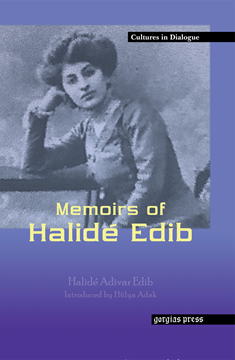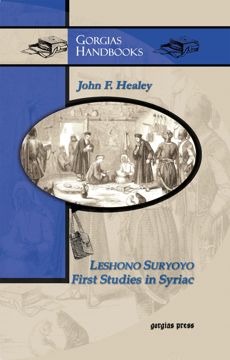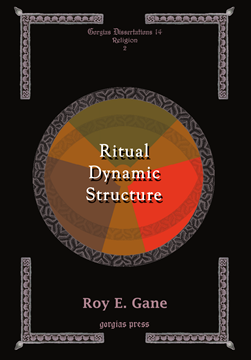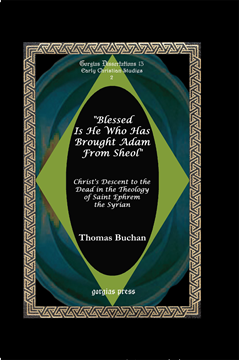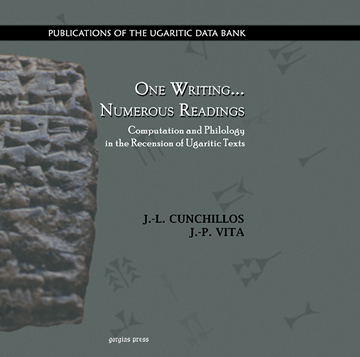Memoirs of Halide Edib
New Introduction by Hulya Adak
Series: Cultures in Dialogue: First Series 4
ISBN: 1-59333-206-8
A prominent novelist, social activist, journalist, and nationalist, Halide Edib Adivar (1882-1964) was one of Turkey's leading feminists in the Young Turk and early Republican period. Memoirs is the first book in her two volume English-language autobiography, published in 1926, while she and her second husband Dr. Adnan were in exile in London and Paris having fallen out of favor with Mustafa Kemal's one-party regime. Edib describes her childhood, her confrontation with her first husband's polygyny, her divorce, and her entry into political and literary writing. Edib's account of her private life provides a unique example of a woman's individual and personal struggle for emancipation and gender equality.
$220.00 (USD)
Unveiled
New Introduction by Carolyn Goffman
By Selma Ekrem
Series: Cultures in Dialogue: First Series 5
ISBN: 1-59333-209-2
Selma Ekrem grew up among the progressive Ottoman Muslim elite. Ekrem benefited from having an unconventional mother, who did not insist on her daughter's veiling. The book covers the family's sojourns outside Istanbul when her father was governor in Jerusalem during the 1908 Young Turk revolution and then governor of the Greek Archipelago Islands, where the whole family was held captive when their island was taken by the Greeks during the Balkan Wars. Returning to Istanbul just as World War I broke out, Ekrem attended the American College for Girls. Frustrated at the restrictions of Turkish female life, Ekrem traveled to America and countered prevalent stereotypes by lecturing on Turkey.
$106.00 (USD)
Leshono Suryoyo
First Studies in Syriac
By John Healey
Series: Gorgias Handbooks 2
ISBN: 1-59333-190-8
John Healey’s, Leshono Suryoyo, is an introductory grammar for those wishing to learn to read Classical Syriac, one of the major literary dialects of Aramaic and the language of one of the main groups of Middle Eastern churches, including the Syrian Orthodox Church, the Church of the East, and the Chaldaean Church. From the first centuries of the Christian era, Syriac was used by the main theological and historical writers of this tradition (Ephrem the Syrian, Philoxenus of Mabbogh, Thomas of Marga, and Barhebraeus). It also continues to be used in worship.
$48.00 (USD)
Recent Developments in Midrash Research
Proceedings of the 2002 and 2003 SBL Consultation on Midrash
Edited by Lieve M. Teugels & Rivka Ulmer
Series: Judaism in Context 2
ISBN: 1-59333-201-7
This work consists of a selection of papers from sessions during the first two years of SBL Consultation on Midrash. It demonstrates innovative approaches to midrashic texts and hermeneutic reflections on similarities and differences between interpretations of the Bible.
$111.00 (USD)
A History of Aramaic-Speaking Christians
By R. Alaux
ISBN: 0-00000-006-X
The Last Assyrians is a film on the survival of the Aramaic-speaking Christians (Assyrians, Chaldeans, Syriacs). The U.S. edition is the English version.
$42.00 (USD)
A Vulgate Old Testament Reader
Series: Gorgias Handbooks 1
ISBN: 1-59333-215-7
This introduction to Jerome's Vulgate Old Testament is useful for students with a limited background in Latin. Several familiar and interesting selections are included, such as the stories of Joseph, Moses, David and Goliath, Job, Daniel, and Jonah. The book also contains several Psalms as well as selections from wisdom and prophetic literature.
$127.00 (USD)
Ritual Dynamic Structure
By Roy E. Gane
Series: Gorgias Studies in Religion GD 14, Religion 1
ISBN: 1-59333-229-7
The present work takes up the neglected quest for a theory of ritual and methodology of analysis that recognizes and traces the contours of ritual dynamic structure. The resulting fresh approach provides a controlled framework for interpreting rituals belonging to various cultures and for identifying bases of comparison between them. The first part of ritual dynamic structure builds a theory and definition of ritual and a corresponding methodology for analyzing specific rituals in terms of their activities and the meanings attached to those activities. The second part illustrates this methodology and its usefulness for comparative studies by applying it to ceremonies of cult purification in the ancient Near East.
$123.00 (USD)
"Blessed is He who has brought Adam from Sheol"
Christ's Descent to the Dead in the Theology of Saint Ephrem the Syrian
ISBN: 1-59333-228-9
Buchan’s work is an examination of the theological use of the doctrine of Christ's descent to the dead in the works of Saint Ephrem the Syrian (ca. 306-373 C.E.). Ephrem's conception of Christ's descent to Sheol provides us with an important and distinctive vision of the significance of this salvific event. Ephrem's use of Semitic and non-Western poetic forms and structures as a mode of theological discourse, coupled with his preference for imagery and symbolism rather than definition, resulted in a variety of vivid depictions of Christ's descent to Sheol. The doctrine is shown to be an integral and multifaceted component of Ephrem's theology.
$184.00 (USD)
One Writing . . . Numerous Readings
ISBN: 1-59333-231-9
This work aims at explaining how the recension of the Ugaritic text--based on the Northwest Semitic Philological Data Bank--originated and how it is produced.
$196.00 (USD)
John Rufus and the World Vision of Anti-Chalcedonean Culture
Second Revised Edition
ISBN: 1-59333-131-2
This book deals with the works of the anti-Chalcedonian hagiographer, John Rufus, and traces the basic motives behind the opposition against the council of Chalcedon in the fifth century through an attempt to reconstruct a specific anti-Chalcedonian culture. As part of the eastern monastic culture, it considered itself a counter-culture guarding purity of ascetic conduct and orthodoxy from being defiled by the perverseness of the majority. Reading John Rufus' hagiography, we find ourselves in the midst of a cosmological warfare between good and evil, where the great heroes of the anti-Chalcedonian movement enter into history as God's warriors against the rebellion of demons and heretics.
$142.00 (USD)
